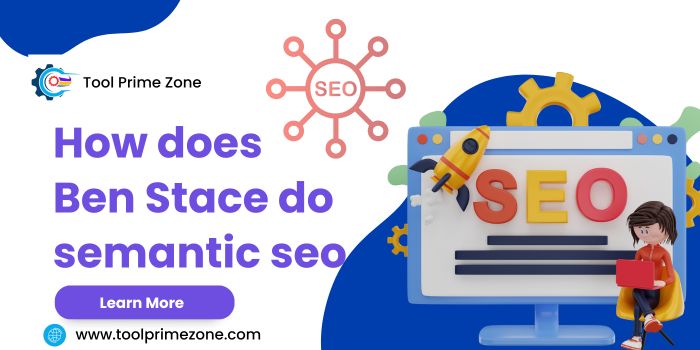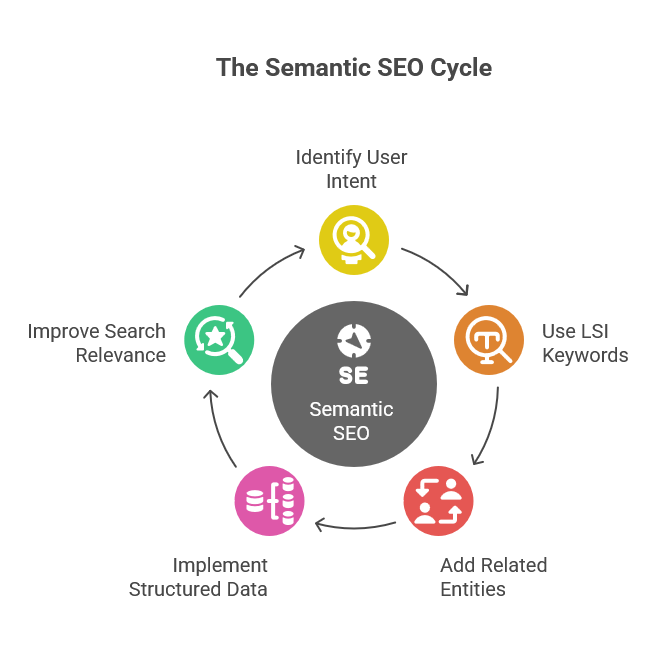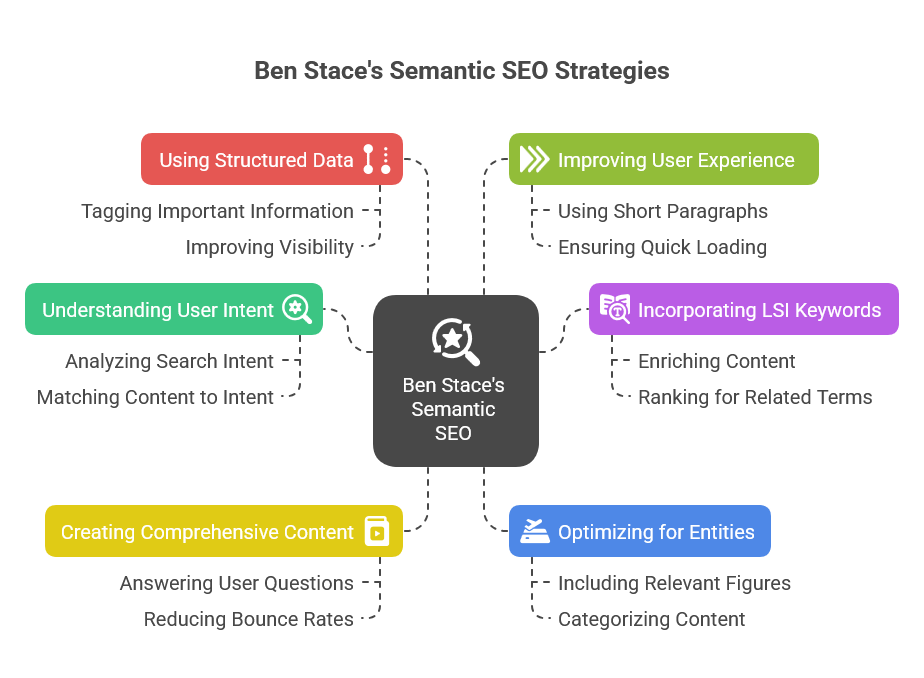
How does Ben Stace do semantic seo?
.
SEO (Search Engine Optimization) has evolved significantly. In the past, optimizing content for keywords was enough to rank high on search engines. Today, semantic SEO is changing the game. Ben Stace, a well-known SEO expert, is a leader in this field. This post will explore how he applies semantic SEO strategies to improve content relevance and boost rankings.
Google reports that 15% of daily searches are new. This shows the importance of semantic search, as Google’s algorithms understand context and meaning.
Moz states that Google’s algorithm uses over 200 ranking factors, many related to semantic SEO, including content relevance and user intent.
These statistics prove that semantic SEO is essential for modern SEO strategies.
What is Semantic SEO?
Traditional SEO focuses on optimizing for specific keywords. Semantic SEO, on the other hand, focuses on the meaning behind those keywords. It’s about understanding the context and user intent. Search engines like Google now concentrate more on the relationship between words and their meanings. This helps them better understand the content and provide more relevant search results.
Ben Stace uses semantic SEO to make content more relevant to search engines and users. This method involves using Latent Semantic Indexing (LSI) keywords, related entities, and structured data, all of which help search engines understand the content more deeply.

Ben Stace’s Approach to Semantic SEO
Ben Stace has successfully applied semantic SEO. His approach includes several strategies, which we’ll break down below:
1. Understanding User Intent
User intent is the goal behind a search query. It’s about understanding why someone is searching, not just what they’re searching for. Ben focuses on this by analyzing search intent. For example, if someone searches for “how to bake a cake,” they want a guide. But if they search for “buy cake mix,” they want to make a purchase. Understanding intent allows Ben to create content that matches what users are looking for.
2. Incorporating LSI Keywords
LSI keywords are related terms that help search engines understand context. If the main keyword is “digital marketing,” LSI keywords might include “SEO,” “content marketing,” or “PPC.” Ben Stace uses LSI keywords to enrich content. This helps the content rank for multiple related terms, making it more comprehensive and relevant to search engines.
3. Creating Comprehensive and In-Depth Content
Semantic SEO requires content to be thorough. Ben creates long-form content that covers all aspects of a topic. Instead of just targeting keywords, he aims to answer every possible question users might have. By providing more in-depth content, Ben ensures that his pages rank higher. This also keeps visitors engaged and reduces bounce rates.
4. Optimizing for Entities and Topics
Search engines now focus on entities—people, places, and things—and their relationships to topics. Ben optimizes content to rank for these entities. For instance, he includes relevant figures, tools, and related issues when writing about digital marketing. This approach helps search engines better understand the context and categorize the content.
5. Using Structured Data and Schema Markup
Structured data, or schema markup, helps search engines understand the content. Ben uses structured data to tag important information. For example, if he writes a product review, he may include information about the product’s price, rating, and availability. This not only helps search engines but can also improve visibility in rich snippets.
6. Improving User Experience (UX)
Ben also focuses on user experience. Content must be easy to read and navigate. He uses short paragraphs, bullet points, and clear headings. Ben also ensures that the page loads quickly and that all links work. By improving UX, he helps keep visitors on the page longer, positively impacting rankings.

How Semantic SEO Impacts Long-Term Rankings
Semantic SEO offers long-term benefits. Unlike traditional SEO, which often focuses on short-term gains, semantic SEO focuses on creating relevant content. Because the content answers many user queries, it continues to rank well. Semantic SEO creates a more sustainable online presence, even as search engine algorithms evolve.
Semantic SEO vs. Traditional SEO
The key difference between semantic SEO and traditional SEO is the approach to keywords. Traditional SEO focuses on exact keyword matching, while semantic SEO focuses on context and intent. Semantic SEO also involves creating more comprehensive content that addresses a broader range of topics. It goes beyond using keywords to focus on the meaning and relationship between terms.
The Role of AI in Semantic SEO
Artificial intelligence (AI) plays a big role in semantic SEO. AI helps search engines better understand language, process complex queries, and provide more accurate results. Ben Stace uses AI tools to analyze and optimize content for better search engine performance.
Latest Trends in Semantic SEO
1. Voice Search Optimization
With the rise of voice assistants like Siri and Alexa, voice search optimization is crucial. Voice search queries tend to be longer and more conversational. Ben optimizes content for natural language, helping it rank better for voice search queries.
2. AI and Natural Language Processing (NLP)
AI and natural language processing (NLP) help search engines understand human language better. This allows search engines to process content more accurately and rank it based on user intent. Ben uses AI tools to optimize content for NLP, ensuring it ranks well.
FAQ:
1. What is semantic SEO?
Semantic SEO is optimizing content based on user intent and context. It goes beyond traditional keyword optimization to focus on meaning and relationships between terms.
2. How can I use semantic SEO on my website?
Start by understanding user intent, using LSI keywords, and creating comprehensive content. Also, use structured data and optimize for entities and topics.
3. What are LSI keywords?
LSI keywords are terms related to the main keyword. They help search engines understand the context of the content.
4. Why is user experience necessary for SEO?
A good user experience keeps visitors on your page longer. It reduces bounce rates and improves rankings.
5. Can semantic SEO improve long-term rankings?
Yes, semantic SEO helps create content that remains relevant over time. It ensures that content answers many user queries, leading to sustained traffic.
Ben Stace’s approach to semantic SEO provides valuable insights into modern SEO practices. By focusing on user intent, LSI keywords, and content relevance, he has boosted his rankings and provided valuable content. Semantic SEO focuses on long-term sustainability, making it a crucial component of any SEO strategy. Following Ben’s methods, you can create content that ranks well and satisfies user needs. Adopting semantic SEO will be key to staying ahead in the digital landscape as search engines evolve.



